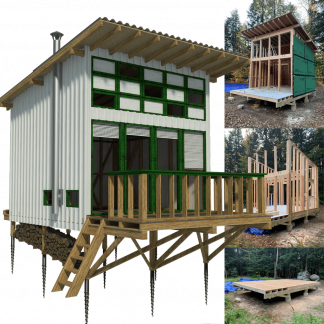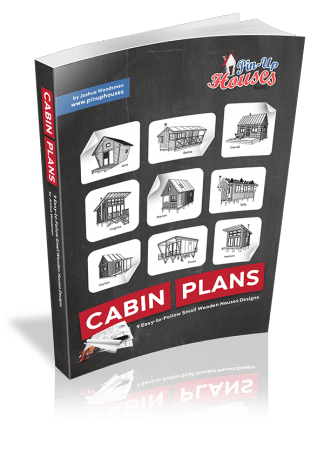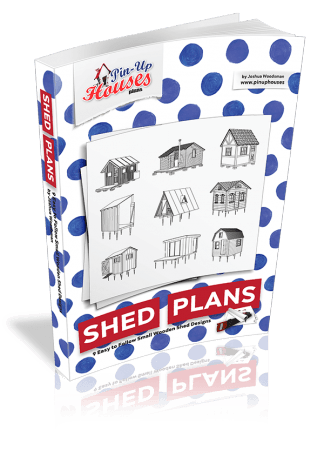A custom house is an appealing option for those who dream of a comfortable space tailored to their specific needs and standards.
Engaging in DIY (“do it yourself”) projects can be advantageous not only for saving money but also because it allows owners to infuse a bit of heart and soul into the process.
However, this enthusiasm can quickly face the harsh reality of financial planning. Many novice builders underestimate the complexity of budgeting, believing that approximate estimating and purchasing additional materials are sufficient. It can lead to project failures or chaos.
Below you’ll find proven budgeting strategies that look ideal for building small houses. These practical tips will help you manage your expenses wisely and minimize common financial mistakes.
Let’s move on to these specific strategies.
8 advanced strategies to manage DIY build budget
Even with ample time and sufficient start-up capital, there’s no guarantee of your project’s absolute success. Experienced builders know that smart resource allocation and robust risk management are also crucial.
Let’s dive into 8 strategies that will help you create a robust financial management system and transform uncertain construction efforts into a powerful project.
Strategy 1. Choose a top-notch project management tool
The first strategy in our list is investing in a powerful project planning and management program.
If you think a simple to-do list or one-page spreadsheet is enough to schedule the building of a small house, you’re probably mistaken.
DIY construction, like any other project, requires a detailed plan with a clear visualization of tasks and resources. Modern Gantt chart-based software makes this effortless.
For example, multifunctional tools like GanttPRO visualize construction as a system of interconnected tasks with their own costs and deadlines. They allow for working with construction processes that need to be carried out separately and in parallel.
These tools help assign funds to specific project stages. Convenient reports and analytics make it easy to identify potential cost overruns.
It’s especially helpful that many of these tools offer ready-made templates for a quick start.
For example, a residential construction schedule template will help you quickly distribute work, coordinate a team, and set priorities without losing sight of the big picture.
Strategy 2. Estimate the cost of materials in advance with a reserve
At first glance, it may seem that building a small house doesn’t require astronomical sums and that all costs can be easily broken down. However, unpleasant surprises can await at every stage.
That is why it’s critical to create a clear specification of all necessary materials before work starts.
Request proposals from several suppliers and review their prices. Find an optimal option. Make a prepayment if it guarantees a discount. Consider delivery costs.
Review estimates and compare current market prices with those budgeted.
Strategy 3. Practice daily expense tracking
Understanding how quickly your money is going down the drain makes you think more carefully about every purchasing decision. It’s simple psychology.
Make it a habit to record every expense on the day you make it. It may become your powerful tool for analytics.
Prepare a table or download a specialized app for tracking finances. They will assist in planning small expenses and large purchases.
Data analysis capabilities will help you identify expenses that exceed your initial financial plan.
Strategy 4. Prevent project scope creep
Many project managers encounter the phenomenon of scope creep. It can occur when they make small improvements during construction that ultimately inflate the budget.
Let’s say you decide to build a back door entrance to a garden or add another window to extend a terrace. Both decisions seem minor, but during construction, they can increase costs by an average of 20-30%.
It’s vital to understand that every change to the original project plan must be evaluated and approved.
Strategy 5. Schedule purchases according to seasonal changes
Construction materials and services can become cheaper or more expensive depending on the month. Therefore, it’s important to pay attention to seasonality to save money.
For example, it makes sense to buy sand before the spring construction boom. Lumber prices are often lower in the winter months.
It’s a great idea to create an annual purchasing calendar with all discount periods. You can create and track it in your project management software.
It’s also important to regularly monitor offers from large construction chains. They often offer beneficial seasonal promotions.
Strategy 6. Take advantage of phased financing
Breaking the entire project into logical phases will streamline your workflow and simplify planning.
Identify phases related to foundation, roofing, windows, painting, and other activities and objects. Then allocate a separate budget with a completion date for each.
This approach will allow you, for example, to avoid spending money intended for wall finishing on expensive patio windows.
Strategy 7. Create a contingency fund
Having a safety net significantly reduces stress and allows for informed decision-making in any business.
It’s a good practice to create a separate contingency fund in addition to the reserve budget. It may contain 10-15% of the total project budget.
This fund should be designated only for truly critical situations. For example, you can use it during a heating main failure or when there is a sharp rise in lumber prices.
If such a fund remains unused after construction is completed, you may simply use it for landscaping, for example.
8. Conduct regular progress audits and check budget compliance
A weekly review of completed work, where you can compare physical progress with the money spent, should also become your ongoing strategy.
A good practice is to photograph your house at each stage of the construction process. This is a simple but effective monitoring tool for comparing progress.
Log the reasons for any deviations from your plan and record how much they cost. Don’t put off analyzing deviations until later.
That’s all about these strategies.
Build your small dream house without financial nightmares
DIY house construction requires strong financial literacy.
The strategies described above only work together. You won’t be able to effectively manage your construction budget using just one or two points from this list.
Be ready to track your funds, constantly analyze progress, and adjust your budget plans. However, remember that even the most perfect financial control system won’t protect you from all unexpected events.








